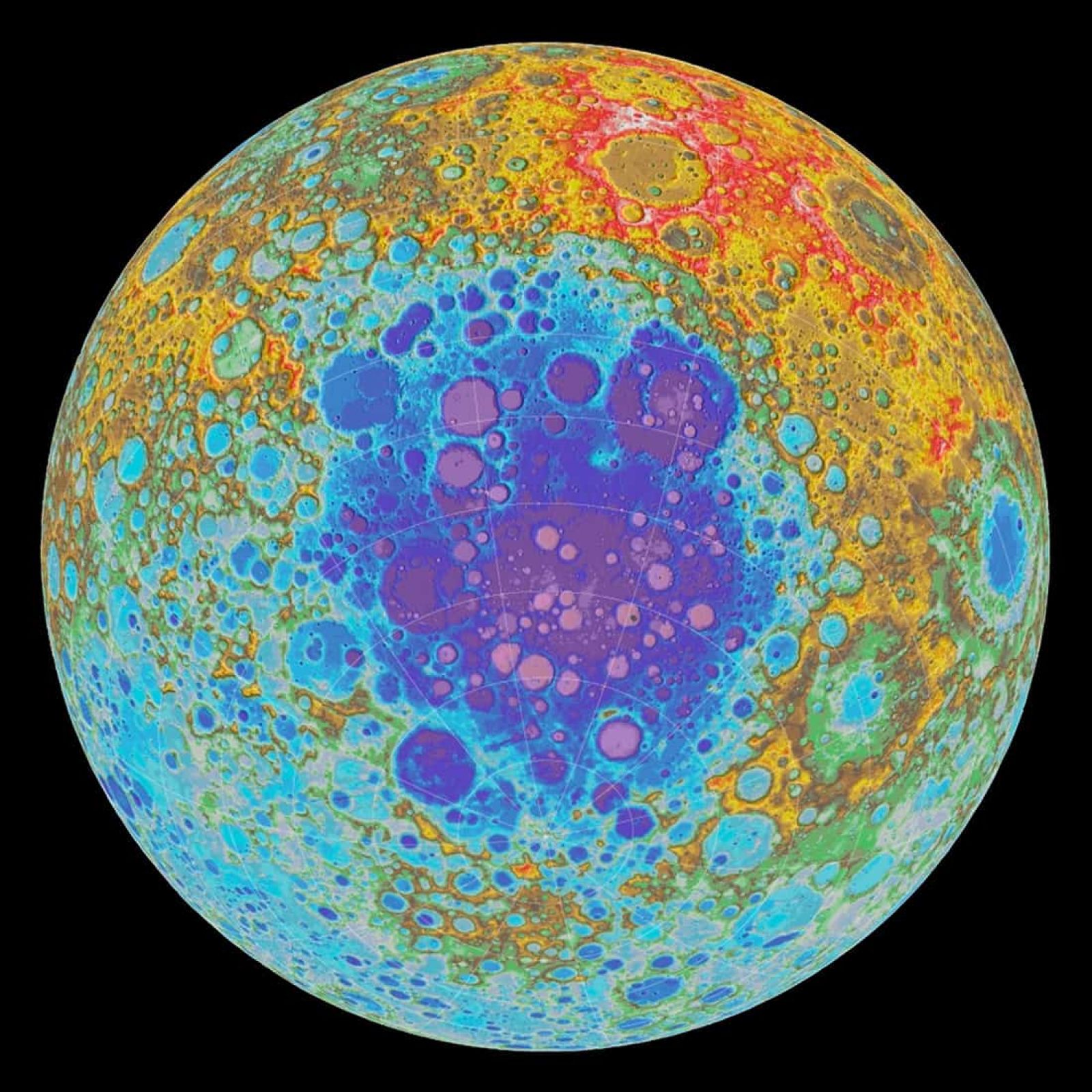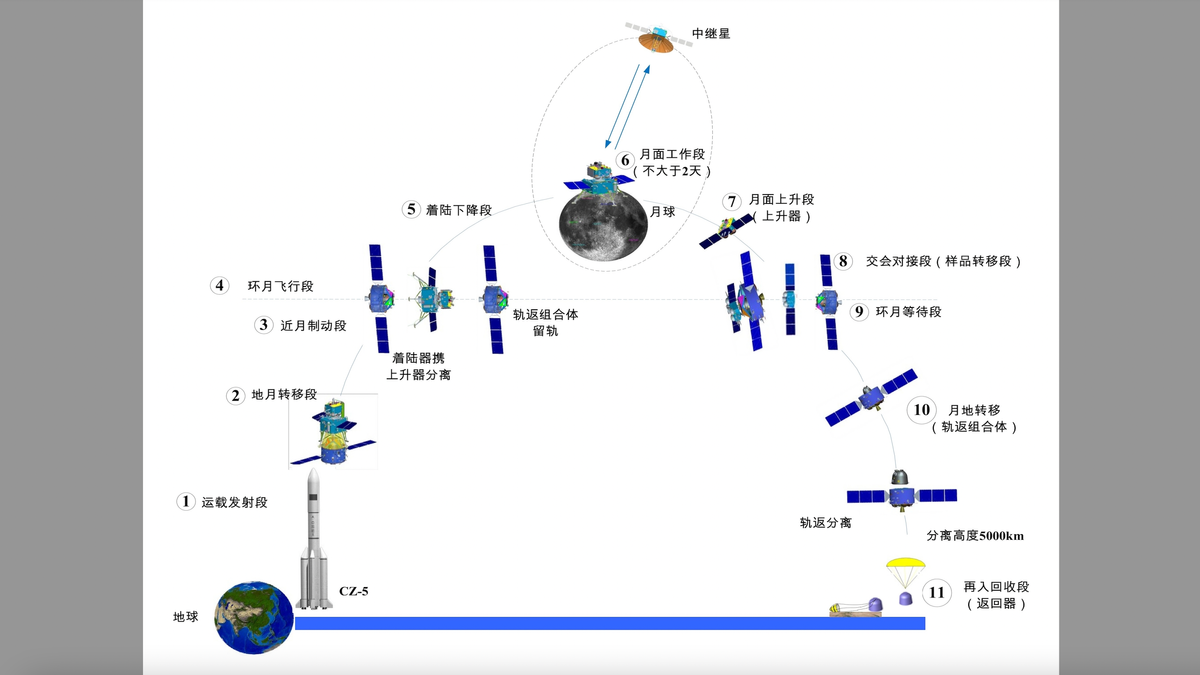Follow us on Google News (click on ☆)

The South Pole-Aitken basin is the blue area in the center of this false-color image.
Credit: NASA/GSFC/University of Arizona
The far side of the Moon has very different characteristics from the visible side. Most of this region lacks the basaltic plains, known as seas, which cover about one-third of the visible side. This raises questions about the geological forces at work.
Chang'e 6 was launched from the Wenchang Space Launch Site in China, aiming to land in the Apollo crater within the South Pole-Aitken basin, one of the largest impact craters in the Solar System. This mission is crucial as it could shed light on obscure aspects of lunar history, including the Moon's primitive conditions and the massive impacts it and Earth suffered several billion years ago.
This complex mission includes four main components: a lunar orbiter, a lander, an ascent vehicle, and an Earth re-entry module. The lander is expected to collect about 4.4 pounds (2 kilograms) of lunar material, both from the surface and subsurface. These samples will then be sent to the orbiter to be brought back to Earth, a total journey expected to last 53 days.

Diagram of the different phases of the Chang'e 6 lunar sample return mission.
Credit: CNSA
Chang'e 6 is not just a technological sequel to the Chang'e 5 mission, which brought back samples from the visible side of the Moon in 2020. It marks a significant milestone as it is the first time samples will be taken from the far side of the Moon, with the associated technological challenges, and returned to Earth.
This ambition is not isolated, as China plans to establish a human presence on the Moon with the construction of an international research station, scheduled for the 2030s, in collaboration with its partners. This is part of a new Moon race, where China and the United States (with the Artemis program) aim to establish inhabited bases near the lunar south pole.